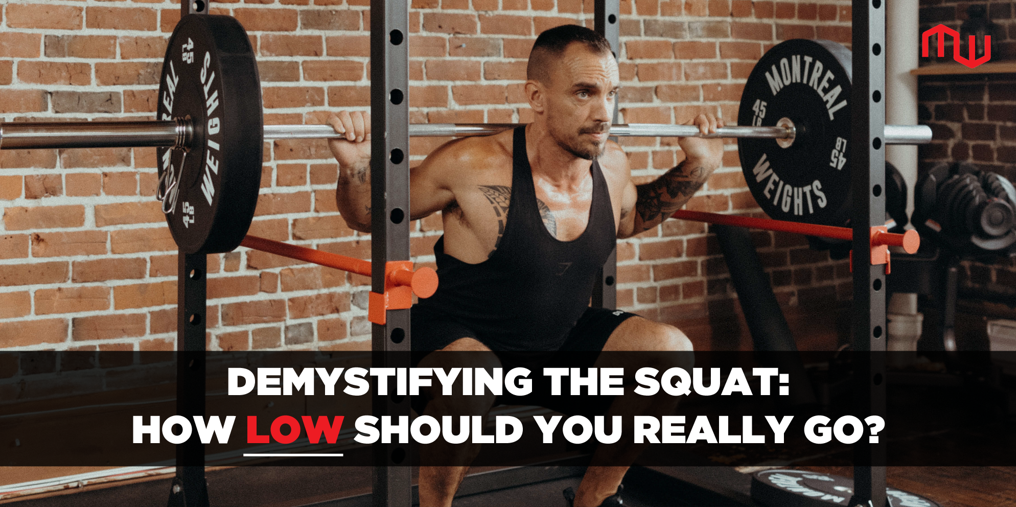One of the most classic and widely used exercises at the gym is the squat. If you’re looking to bulk up your legs and booty, or just gain strength in your lower half, the squat is a perfect option. But despite how well-known the squat is, many people are wondering, how low should you really go when you do one?

What is a Squat?
The squat is a pretty primal movement, one that you’ve probably been doing since you were a toddler. Simply put, a squat is a lower body movement in which you lower your hips from a standing position as if you’re sitting down in a chair, and then standing back upright.
It’s meant to help strengthen the lower body, particularly the hips, thighs, and buttocks. You may perform a squat with or without additional weights like a barbell or dumbbells. Squats may either be done repetitively or performed as a hold until failure.
How to Squat Safely
The most important aspect of squatting safely is to practice proper form. Common injuries that can result from squatting include damage to your knees, hips, neck, and lower back.
Certain equipment is often recommended with squats, like weightlifting belts and knee wraps. But the truth is that these items won’t prevent injury if you don’t have the right form. So what’s the safest way to perform a squat?
Begin in a standing upright position with a straight spine and shoulders back. Your stance should be wider than shoulder-width and your feet should be firmly and evenly planted.
As you squat slowly, keep your head up, your eyes forward, your torso straight, and your core muscles engaged. This will help keep your spine from curving and placing too much pressure on sensitive areas of your back and protect your neck. Lean into the heels and balls of your feet for stability. Be sure to breathe, exhaling as you stand back up.
Squatting can pose an injury to your knees, regardless of how old you are or whether you have existing knee concerns. Research shows that having a narrow stance when you squat places significantly more pressure on your knees, whereas a wider stance can help alleviate some of that stress. It doesn’t appear to make much of a difference whether you point your toes straight forward or slightly outward.
If you use a barbell be sure that it’s resting on your shoulders and not on your spine. If you choose dumbbells, you can hold these in front of you under your chin, or rest gently on your shoulders. It’s also a good idea to have a spotter with you if you’re using weights when you squat.
How Low Should You Squat?
Now that you understand the proper form for squatting, how low should your squat go? While some say that it depends on what your end goal is, it’s best to refer back to the safest way to squat.
Some people recommend squatting down as low as you can go, in order to engage your buttocks as much as possible. However, this can put you at a higher risk for injury and isn’t necessary to see results.
In a 2001 review published in the journal Medicine and Science in Sports and Exercise, the author looked at over 70 studies on knee mechanics when doing a squat. He found that bending the knees to 90 degrees was sufficient for engaging the quadricep muscles in a way that would substantially increase leg strength and size.
In other words, squatting into a position where your thighs are parallel with the ground is enough, if you don’t want to go further. After all, squatting even lower puts you at a higher risk for injury, particularly for hurting your back, and the potential benefits may not outweigh the risk for most people just looking to boost strength.
How low should you squat? The safest way, which is also effective for improving muscle strength and size over time, is to squat to a parallel position. Act as though you’re very carefully sitting in a chair, and then standing back up, incorporating weights if you like.




